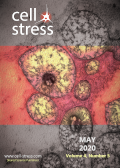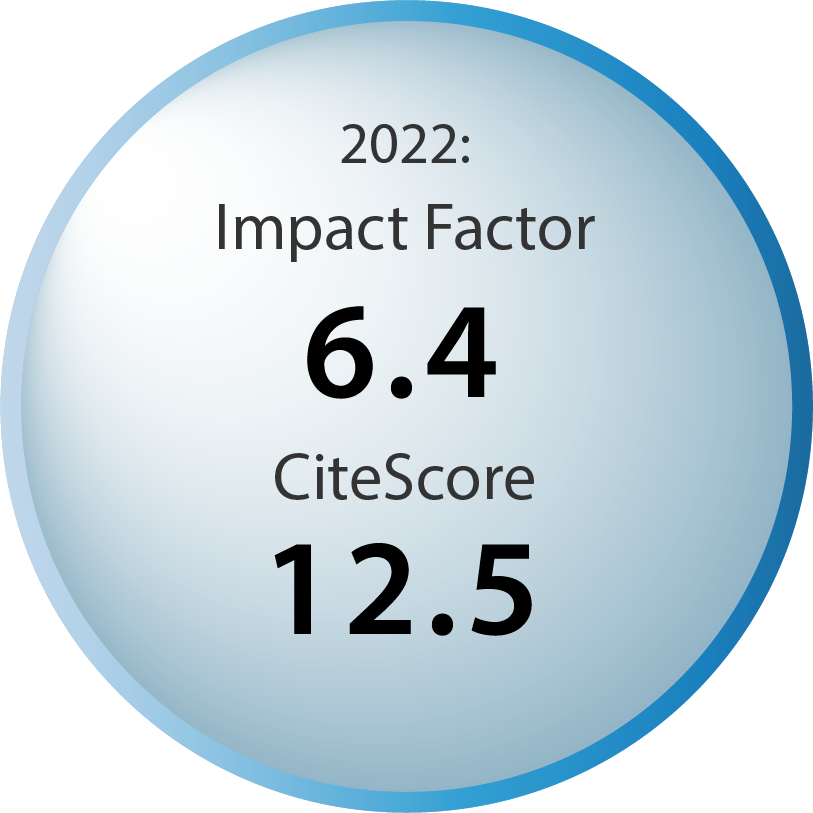Table of contents
Volume 4, Issue 5, pp. 92 - 113, May 2020
Cover: This month in
Cell Stress: The role of mitophagy in cardiomyocyte differentiation. Image shows stylized electron micrograph of abnormally shaped and structured mouse mitochondria. Public domain image by Patricia M. Zerfas, NIH Office of Research Services. Image modified by
Cell Stress. The cover is published under the
CC BY 4.0 license.
Enlarge issue cover
Copper – a novel stimulator of autophagy
Hans Zischka and Guido Kroemer
News and thoughts |
page 92-94 | 10.15698/cst2020.05.218 | Full text | PDF |
Abstract
Toxic copper accumulation causes Wilson disease, but trace amounts of copper are required for cellular and organismal survival. In a recent paper Tsang et al. (Nat Cell Biol, doi: 10.1038/s41556-020-0481-4) demonstrate that copper binds with high affinity to a designated interaction site in the pro-autophagic kinases ULK1 and ULK2. Chelation of copper or genetic deletion of this copper-binding site inhibits autophagy and hence reduces the fitness of KRAS-induced cancers. These findings suggest that copper chelation might constitute a novel therapeutic intervention on autophagy-dependent malignancies.
HIF1α or mitophagy: which drives cardiomyocyte differentiation?
Beatriz Villarejo-Zori, Juan Ignacio Jiménez-Loygorri and Patricia Boya
News and thoughts |
page 95-98 | 10.15698/cst2020.05.219 | Full text | PDF |
HIF1α-dependent mitophagy facilitates cardiomyoblast differentiation
Jin-Feng Zhao, Catherine E. Rodger, George F. G. Allen, Simone Weidlich and Ian G. Ganley
Research Articles |
page 99-113 | 10.15698/cst2020.05.220 | Full text | PDF |
Abstract
Mitophagy is thought to play a key role in eliminating damaged mitochondria, with diseases such as cancer and neurodegeneration exhibiting defects in this process. Mitophagy is also involved in cell differentiation and maturation, potentially through modulating mitochondrial metabolic reprogramming. Here we examined mitophagy that is induced upon iron chelation and found that the transcriptional activity of HIF1α, in part through upregulation of BNIP3 and NIX, is an essential mediator of this pathway in SH-SY5Y cells. In contrast, HIF1α is dispensable for mitophagy occurring upon mitochondrial depolarisation. To examine the role of this pathway in a metabolic reprogramming and differentiation context, we utilised the H9c2 cell line model of cardiomyocyte maturation. During differentiation of these cardiomyoblasts, mitophagy increased and required HIF1α-dependent upregulation of NIX. Though HIF1α was essential for expression of key cardiomyocyte markers, mitophagy was not directly required. However, enhancing mitophagy through NIX overexpression, accelerated marker gene expression. Taken together, our findings provide a molecular link between mitophagy signalling and cardiomyocyte differentiation and suggest that although mitophagy may not be essential per se, it plays a critical role in maintaining mitochondrial integrity during this energy demanding process.



